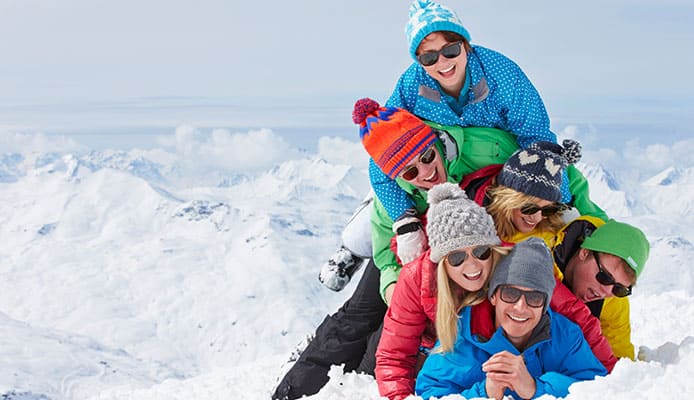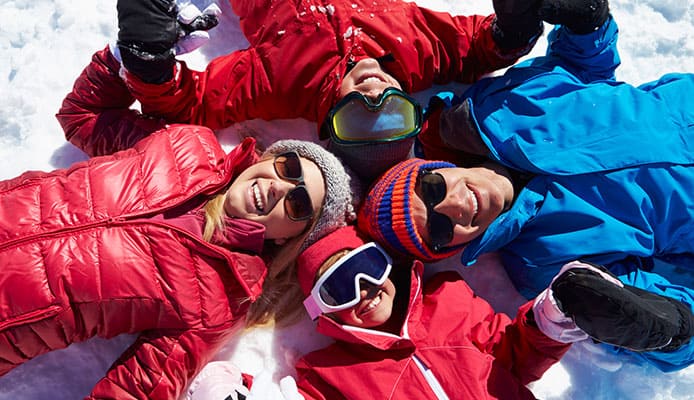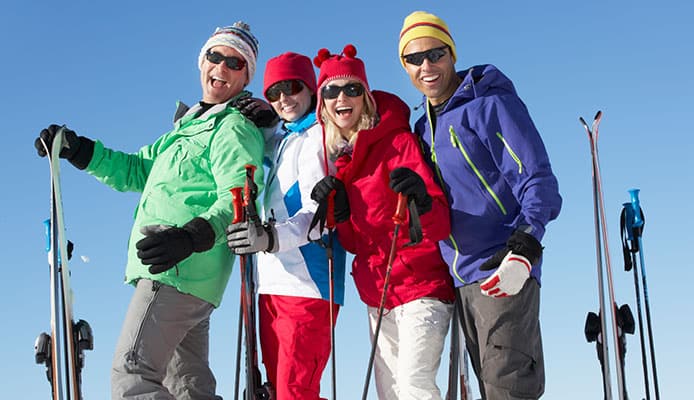
-
1.
-
2.
-
3.
-
4.
-
5.
Sunglasses boast style and protection no matter your location or the weather condition. There’s always that sense of bad assery that comes with them – if you pick the right style. Additionally, a good pair will protect you from bright light (polarized) and UV rays making your outdoor experience more comfortable.
Even, during the winter and colder seasons, a pair of glasses still works great. The question is do they work great when skiing? And the answer is a yes. As long as you pick the right functionally pair, they most definitely come with an added value.
I’ve listed below 10 best sunglasses for skiing so you can have a variety of choices – mind you, the best choices, for your outdoor endeavors over the winter season.
OUR TOP PICK
RIVBOS
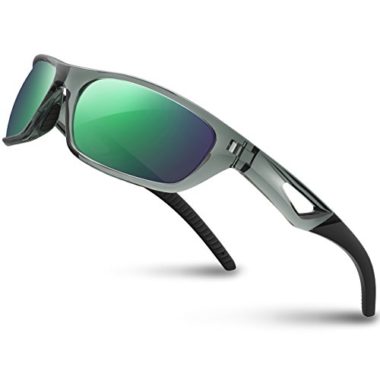
- Stand Out Features - Why We Love It
- 100% UV400 sun protection
- Polarized to reflect off bright lights for clear visibility
- UV TAC lenses
- Impact and shatter proof construction
- Lenses available in other colors for use in darker and clouded conditions
- Comfortable nose pad
Lens width: 64mm
UV Protection: Yes, UV400
Polarized: Yes
Color: Grey
EDITORS CHOICE
Hullslem
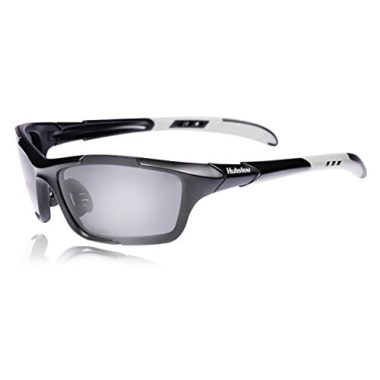
- Stand Out Features - Why We Love It
- State o the art Italian light-weight and polarization engineering
- Snug three point fit for a perfect fit
- Dual lens ellipsoid geometry for depth perception, color contrast and clarity
- True HD grade lenses
- Iridium lens coating to cut out irritating glare
Lens width: 69mm
UV Protection: Yes, UV400
Polarized: Yes
Color: Smoke black
BEST VALUE
Merry’s
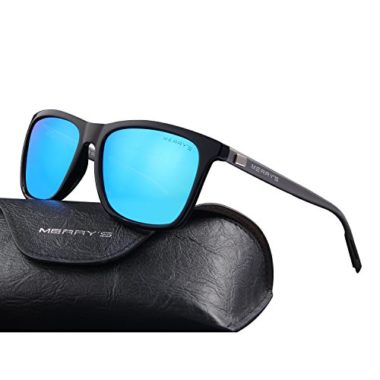
- Stand Out Features - Why We Love It
- One-piece nose pads design
- Synthetic resin frame for sturdy support
- Metal leg endings for added fatigue-free comfort
- Silica gel metal temple ending tips for enhanced comfort
- HD visibility
Lens width: 56mm
UV Protection: Yes, UV400
Polarized: Yes
Color: Blue
Torege Polarized Sports
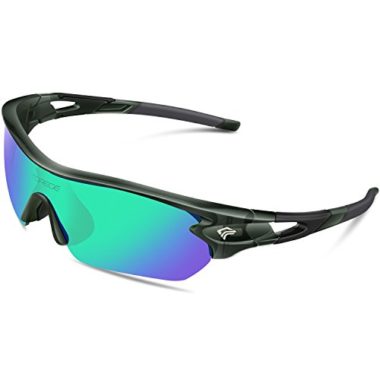
- Stand Out Features - Why We Love It
- 5 interchangeable multicolored lens
- Clear, yellow and black lens colors for day time to nighttime and cloudy day use
- UV400 breakage proof and shock resistant Torege lens tech
- Unique hypo-allergenic frame
- Rimless jacket frame design for clear lower vision field
- Comfortable nose pad and sleek frame design
Lens width: 70mm
UV Protection: Yes, UV400
Polarized: Yes
Color: multi-colored
Bevi
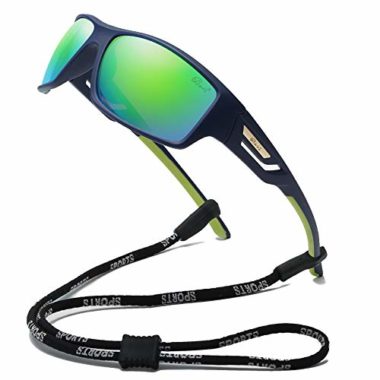
- Stand Out Features - Why We Love It
- Anti-loss safety cord
- TAC seven-layered lenses for full protection
- Ultralight and flexible Swiss grade TR90 frame
- No-slip rubber nose pad and end tip for enhanced rip and perspiration prevention
- Colorful HD vision
Lens width: 64mm
UV Protection: Yes, UV400
Polarized: Yes
Color: Green
Sea Specs Extreme Sports
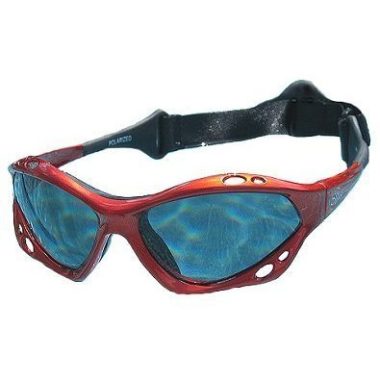
- Stand Out Features - Why We Love It
- Adjustable non-removable strap for secured fit
- Wrap around frame for full closure
- Ideal for all-season and speedy extreme outdoor sports
- Anti-fog lens construction
- Water-repelling
Lens width: 64mm
UV Protection: Yes, UV400
Polarized: Yes
Color: Grey
Oakley Mens Holbrook
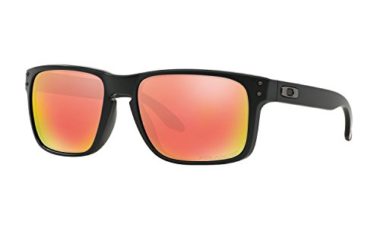
- Stand Out Features - Why We Love It
- HDO refraction high definition optics
- Impact protection
- Premium flexible and durable frame
- Three-point fit system
- Notable eyewear and sports brand which guarantees quality
Lens width: 62mm
UV Protection: Yes, UV400
Polarized: Yes
Color: Ruby
Tifosi Women’s Alpe
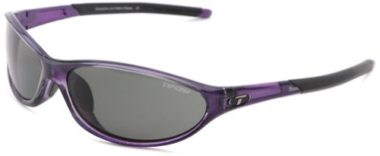
- Stand Out Features - Why We Love It
- High grip hydrophilic nose pads for comfortable fit and prevention of sweat irritation
- Grilamid Tr-90 sturdy and flex frames
- Patented Glare Guard lens coating system for reduced glare irritation
- Full closure frame system
- Wider 62mm lenses
Lens width: 62mm
UV Protection: Yes, UV400
Polarized: Yes
Color: Smoke
Oakley Mens Jawbreaker
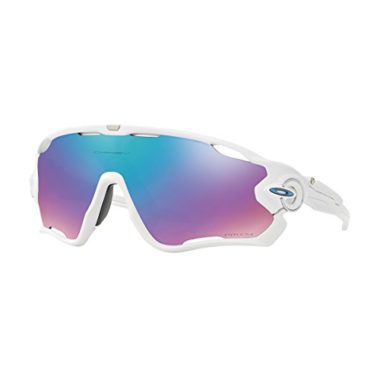
- Stand Out Features - Why We Love It
- PRIZM lens tech for color and detail spotting enhancement
- Patented HDO for superior optical clarity
- Nose pads and ear socks for comfortable fit
- Sturdy thermoplastic injected frame for durability
Lens width: 31mm
UV Protection: Yes, UV400
Polarized: Yes
Color: Pink
Wiley X WX
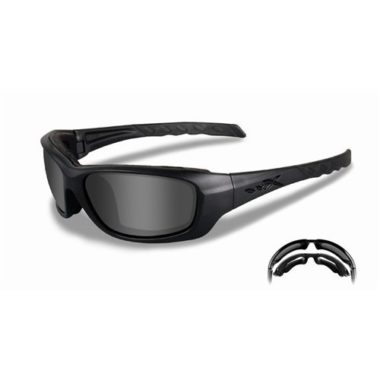
- Stand Out Features - Why We Love It
- Meets ANSI Z87.1 industrial standards for high-mass and velocity impact protection
- Removable facial cavity seal gasket seals and repels cold air, wind, debris and snow
- Ideal for sunny and cloudy days
- Comes with T-peg elastic strap and leash cord with rubber grip
- Gives good peripheral vision
Lens width: 63mm
UV Protection: Yes, UV400
Polarized: Yes
Color: Green
How To Choose Sunglasses For Skiing – Buying Guide
UV Protection
UV protection is important even for your ski sunglasses. You may be skiing on a day with bright sun thus, sporting sunglasses with UV protection coating help to protect you from the sun. Additionally, the best sunglasses for skiing are versatile and thus, can be used during all four seasons.
It is, therefore, important to choose sunglasses with these features. Many skiing sunglasses have a UV protection of up to 400nm and are able to protect you from UVA and UVB rays to offer 100% protection. Look for this feature and go for glasses with 100% UV400 protection as one of its features.
Polarization
Polarization on the lenses reduces glare from surfaces such as snow, water, glass, and mirrors thus preventing eye strain to the wearer. Polarization, therefore, ensures the sunglasses provide true color images and spot out details of the image. Think of it their way, polarized ski sunglasses work as if they are your actual eyes but special eyes that are able to repel the strain for light reflection.
This is how useful polarized lenses are – when there is glare, it distorts the true color of objects you are viewing this, making it harder for you to tell objects apart. Now, imagine slushing through the slopes whilst wearing non polarized ski sunglasses with the debris, snow lumps, and boulders around.
Many and the best ski goggles are polarized to avoid this. Polarization is one of those features that are amongst the top that you need to ensure your skiing glasses have. Product features and specifications easily point this out.
Type Of Lenses
There are many types of skiing sunglass lenses and each comes with their own advantage. Photochromic lenses, for example, are light adaptive and change their color tint depending on the light conditions and refraction. This means that these ski sunglasses glare are well suited to work in different light conditions.
Mirror lenses on the other end reduce glare from reflected light. Keep in mind, they reduce and don’t completely eliminate light as polarized lenses effectively do. They also work great during the day to easily spot out details on the terrain.
Additionally, lenses may be constructed with layers to be as functional as possible. Some of the key features include anti-glare, polarized, UV protected, and photochromic. Most features are incorporated in one pair. The most common are UV protection and polarization.
Material And Style
The best sunglasses for skiing are constructed with high-grade plastic such as nylon, polyamide, or polycarbonate. These materials are generally favored due to their sturdy and impact resistant nature. Using plastic for outdoor sunglass lenses works better than using glass because plastic is shatterproof and is more likely to withstand the aggressiveness of the outdoors.
The most common styles for skiing sunglasses are full-frame glasses, half frame sunglasses, and frameless glasses. Full frame glasses are perhaps are favored choice because they offer full protection and closure around your eyes. Additionally, their fit is normally easy to secure and can be sealed to ward off snow or debris.
Half frame and rimless are more stylish and many incorporate that athletic look. Furthermore, they facilitate easy and clear low vision that is needed for activities such as skiing and cycling that require you to have a clear front vision but also a clear vision on the terrain.
You might also like: Perfect Kids Ski Pants
Fogging
It is important to look for snow sunglasses with anti-fog qualities. Such glasses normally incorporate a dual-layered lens construction which forms a barrier between the two walls. This enables snow sunglasses to maintain outdoor and indoor temperatures. The breathability of glasses also allows for enhanced airflow which prevents fogging. Thus, snow sunglasses that are sealed o keep out even water are a great choice. However, you want them to be breathable.
Coverage
Snow sunglasses sometimes feature a wrap-around frame construction. This kind of construction provides full closure around your eyes whilst maintain a proper and secured fit. Such fabrication works especially great for extreme sports that incorporate a lot of maneuverability and speed – normally under cold conditions. To protect your vision, this coverage system also effectively repels water, snow, wind, and other debris.
FAQs
Q: What Are Skiing Sunglasses?
Like any other snow sunglasses, eyewear for skiing provides protection for your eyesight. They are normally polarized and also feature 100% UV protection. This type of snow sunglasses is however important and more specific because they are designed for the sport. These sunglasses normally feature special colored lenses.
The colors of the lenses determine what light conditions the glasses are suited for – the darker the color the lighter the condition. This basically means the amount of light the glasses are able to refract and normally darker colors are able to absorb less light than brighter ones. This feature is also denoted with a percentage. The percentage exhibits the amount of light refracted. For example, grey color is able to refract 10% light thus making grey lenses ideal for days with bright sun. The bright yellow lens on the other end is able to absorb 90% light thus making them ideal for use in heavy-clouded conditions.
Some skiing sunglass lenses are photo chromic and able to change the lens tints according to the light conditions which make them highly versatile – so it’s the light conditions that control lens functions and not the lens color tint.
Q: What Is The Difference Between Ski Sunglasses And Ski Goggles?
Goggles for skiing offer relatively large surface protection and are able to withstand the harsh outdoors better than skiing sunglasses. Some goggles are even constructed to allow one to wear them over glasses. Ski goggles round your eyes protecting them from the weather and harsh winds.
They normally feature a tight yet snug fit with a soft foam padded frame and therefore, provide more warmth. They are constructed to comfortably work and counter snow and wind with impeccable impact and shatterproof lenses.
Q: What Is The Best Lens Color?
We can’t really say there is the best lens color because the color of the lens works best according to the light condition it works for. A simple rule to follow is darker colors work for lighter conditions whilst lighter colors work for darker conditions (night-time and heavy-clouded day). So it’s good to know what lens color works for a specific light condition (even with a photo chromic lens, you need to examine its capabilities and limits) – black and grey work great on a sunny day!
Q: Is It Safe To Wear Sunglasses Skiing?
Absolutely. All you need to do is pick snow sunglasses that are constructed to fit your activity. For example, wrap-around frame glasses that are polarized and UV protected work great for extreme sports. They offer the weather protection needed as well as a fully and tight-fitting finish which doesn’t leave anything hanging and doesn’t risk the glasses from falling off which will lead to a skier for example to lose focus. They are also great at warding off snow and debris from the eyes.
Globo Surf Overview
Snow sunglasses reviews offer quite interesting and honestly, difficult options to choose from – they are all great. As an outdoor enthusiast, snow sports are fun but also require you to be on point with your gear to enjoy comfortable and without risk of injury. So the guide on choosing the best skiing sunglasses abode sure is useful in directing you with the feature you need to look out for. So what are you waiting for, make that difficult choice and head on out to enjoy the outdoors.
More Snow Ski Gear Reviews:
- Ski Pants
- Cross Country Ski Gloves
- Skiing Books
- Backcountry Ski Bindings
- Women Ski Boots
- Cross Country Ski Boots
- Women’s Skis
- Watches For Skiing
- Ski And Snowboard Tuning Vises
- Ski And Snowboard Wall Racks
- Kids Ski Helmets
- Ski Gloves For Kids
- Photochromic Ski Goggles
- Ski Boots For Kids
- Kids Ski Poles
- Ski Boots For Narrow Feet


